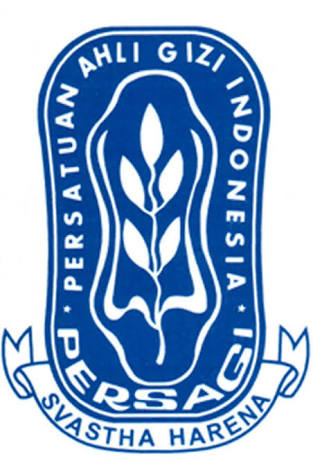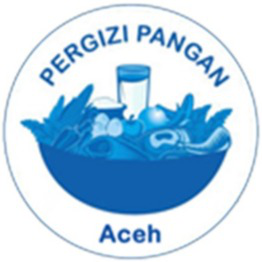The Relation of LBW, Mother’s Height with The Accidence of Stunting in the Children 6-24 months in Aceh Barat Regency
Abstract
Stunting is the condition of malnutrition where the height is not as proportional as the age which can be investigated by the measurement of height indicator based on age. Stunting signifies the lack of nutrition condition which has happened for a long time and requires the time for children to grow and to be fully recovered. According to Riskesdas 2013 report, the prevalence of stunting in children under five years is 37,2%. One of the provinces which regarded as a serious category is the Province of Aceh with a prevalence of 41,5% consists of the very short 20,1% and the short around 21.4%. The regency of Aceh Barat is one of the regencies in Aceh province. This regency still confronts severe nutritional issues, one of them is stunting with the prevalence of 40,9%. There are many factors related to the case of stunting, for example LBW (Low body weight), mother’s height.
Objective: Knowing relation LBW, mother’s height with the accidence of stunting in the children 6-24 months old in Aceh Barat regency.
Method: This study is an analytic observational study with the quantitative method. The design of this study is cross sectional which learn the correlation between independent variables and the dependent variables, where the measurement of both variables was conducted at the same time.
Result: From 212 children, there are 55,66% children suffer from stunting. The result of bivariate analysis suggests that the factors related to stunting is low birth-weight (p <0.05). Height of the mother are not related to stunting cases (p> 0.05).
Conclusion: the factors related to stunting is low birth-weight.Full Text:
PDFReferences
Adair,L.S. & Guilkey, D.K, 1997.Age-specific determinants of stunting in Filipino Children. The Journal of Nutrition, 127(2), pp.314-320
Allen, L.H. & Gillespie, S.R., 2001. What Works? A Review of the Efficacy and Effectiveness of Nutrition Interventions
Amigo, H., Bustos. P., Leone. C., Radrigan, M.E. 2001. Growth deficit in Chilean school children. American Society for Nutritional Sciences, PP.251-253
Balitbangkes Kemenkes RI, 2013. Riset Kesehatan Dasar. , pp.1–306.
Balitbangkes Kemenkes RI, 2010. Riset Kesehatan Dasar.
Balitbangkes Kemenkes RI, 2007. Riset Kesehatan Dasar.
Black, R.E., Allen, L.H., Bhutta, Z.A., Caulfield, L.E., Onis, M. D., Ezzati, M., Mathers, C., Rivera, J. 2008. Maternal and child undernutrition: global and regional exposures and health consequences. The Lancet, 371(9608), pp.243–260.
Chirande, L. Charwe, D., Mbwana, H., Victor, R., Kimboka, S., Issaka, A.I., Baines, S.K., Dibley, M.J., Agho, K.E., 2015. Determinants of stunting and severe stunting among under-fives in Tanzaniz: evidence from the 2010 cross-sectional household survey. BMC pediatrics, 15,p.165
Ernawati, F., Rosmalina, Y., Permanasari, Y. 2013. Pengaruh asupan protein ibu hamil dan panjang badan bayi lahir terhadap kejadian stunting pada anak usia 12 bulan di kabupaten Bogor. Penelitian Gizi dan Makanan, Vol. 36 (1): 1-11.
Henningham, H.B & Mcgregor, S., 2005. in : Gibrey, M.J., Margaretts, B.M., Kearney, J.M., Arab, L., Alih bahasa: Hartono, A. Gizi Kesehatan Masyarakat (Public Health Nutrition). Jakarta: Penerbit Buku Kedokteran EGC, PP.302-323
Khairunnas, K., Husna, A., & Marniati, M. (2020). The Relationship of Socio-Economic with Nutritional Status in Toddlers in Meureubo Sub-District West Aceh Regency. Journal of Nutrition Science, 1(1), 6-10.
Mamabolo, R.L., Albert., M., Steyn, N.P., Waal, H.A.D., Levitt, N.S. 2005. Prevalence and determinant of stunting and overweigth 3-years-old black South of African children residing in the central region of Limpopo province, South Africa. Public Health Nutrition 8 (5): 501-508
Mushtaq, M.U., Gull, S., Khurshid., Shahid, U., Shad, M.A., Siddiqui, A.M., 2011. Prevalence and socio-demographic correlates of stunting and thinness among Pakistani primary school children. BMC public health, 11(October), p.790
Nasution, D., Nurdiati, D.S., Huriyati, E., 2014. Hubungan berat badan lahir dengan stunting pada anak usia 6-24 bulan di Kota Yogyakarta. Jurnal Gizi Klinik Indonesia. Vol.11, No.01:31-37.
Pongou, R., Ezzati, M., Salomon, J.A., 2006. Household and community sosioeconomic and evironmental determinants of child nutritional status in Cameron. BMC Public Health, 6(98), PP.1471.
Ramli., Agho, K.E., Inder, K.J., Bowe, S.J., Jacobs, J., Dibley, M.J., 2009. Prevalence and risk factors for stunting and severe stunting among under-fives in North Maluku province of Indonesia. BMC pediatrics, 9, p.64.
Soekirman. 2000. Ilmu gizi dan aplikasinya. Departemen Pendidikan Nasional. Jakarta
Soekirman. 2006. Dari Empat Sehat Lima Sempurna ke Pedoman Gizi Seimbang Dalam Siklus Kehidupan Manusia. Primamedia. Jakarta
Soetjiningsih.2012. Tumbuh Kembang Anak. Buku Kedokteran EGC. Jakarta
Stuijvenberg, M., Nel, J., Schoeman, S.E., Plessis, L.M., Dhansay, M.A., 2015. Low Intake of Calcium and Vitamin D is Associated with Stunting in 2-5-Year-Old Children from an Impoverished South African Community. European Journal of Nutrition & Food Safety, 5(5), pp.459–460.
Sudiman., 2008. Stunting atau pendek : Awal perubahan patologis atau adaptasi karena perubahan sosial ekonomi yang berkepanjangan. Media Litbang Kesehatan, 18(1), pp.33–42.
UNICEF., 2010. Penuntun Hidup Sehat. Kementerian Kesehatan Republik Indonesia. Jakarta
Wahdah, S., Juffrie, M., Huriyati, M., 2014. Faktor risiko kejadian stunting pada anak umur 6-36 bulan di wilayah pedalaman Kecamatan Silat Hulu, Kapuas Hulu, Kalimantan Barat. Jurnal Gizi Dan Dietetik Indonesia. Vol. 3, No. 2: 119-130.
Worid Health Organitation (WHO)., 2006. Child growth standards: length/height-for age, weight-for-age: Methode and Development. Geneva: Departement of Nutritional for Health and Development.
DOI: https://doi.org/10.35308/jns.v1i2.2774
Refbacks
- There are currently no refbacks.
Managed by Department of Nutrition, Faculty of Public Health
Published by Universitas Teuku Umar ,
Website: http://jurnal.utu.ac.id/JNS/index
Email: jns@utu.ac.id
Phone/Fax: +62-852-7736-5563; E-mail:
This work is licensed under a Creative Commons Attribution-ShareAlike 4.0 International License.














